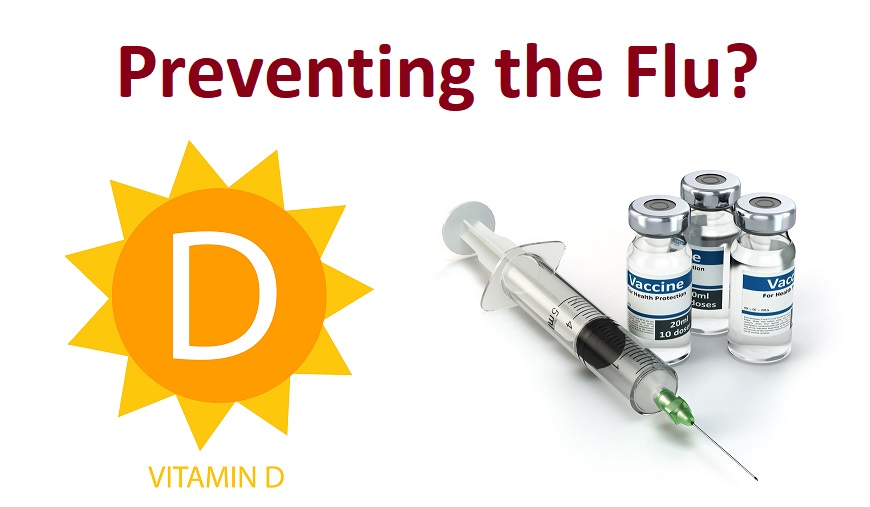Study: Vitamin D Effective in Preventing Flu Only Among Non-vaccinated Population

by Brian Shilhavy
Editor, Health Impact News
Numerous peer-reviewed published studies have linked an increase in Vitamin D uptake with a decrease in influenza infection during the flu seasons. The logic is easy to understand: winter brings shorter days with less sunlight, when influenza is most prevalent, while influenza outbreaks are rare during the summer months with increased exposure to sunlight, the most common source of Vitamin D.
One of those studies, a meta-study that looked at 25 separate studies involving over 11,000 people, was published in the British Medical Journal last year (2017), and published by Dr. Mercola. (See: Study: Vitamin D Is More Effective Than Flu Vaccine.)
However, other studies have also been published which seem contradictory, showing little to no association of uptake in Vitamin D with a decrease in flu infections. These studies have, obviously, been highlighted more by the corporate-sponsored “mainstream” media in their efforts to market the annual flu vaccine.
A study published from researchers in Japan may have unraveled this seeming paradox, which is exactly what they set out to study:
In their conclusion, they admit that overall the statistics did not significantly lower the risk of influenza through Vitamin D supplementation, except for one sub-group – those who had NOT received a flu vaccine.Several intervention studies have examined the effect of vitamin D supplementation on influenza or influenza-like illness, but their results have been inconsistent. We prospectively examined the association of serum 25-hydroxyvitamin D with influenza among Japanese workers. (Source.)
They wrote:
Could this be the reason why there are seemingly contradicting results from studies looking at Vitamin D levels and rates of influenza? Could the flu vaccine itself be preventing the body’s own immune system from benefiting with higher levels of Vitamin D to naturally fight off flu infections?In a subgroup of participants without vaccination, vitamin D sufficiency (≥30 ng/mL) was associated with a significantly lower risk of influenza (odds ratio 0.14; 95% confidence interval 0.03-0.74).
The researchers from Japan stated that more research is needed to look at why unvaccinated Japanese employees had a better rate of resisting flu infections with higher levels of Vitamin D.
Here are some more comments from the full study (Abstract here):
According to the results of cubic spline regression analysis, the association between serum 25-hydroxyvitamin D concentration and influenza appeared to be linear (from 21.9 ng/mL of serum 25-hydroxyvitamin D) among participants who were not vaccinated for influenza, influenza, with the odds of influenza steadily decreasing with increasing 25-hydroxyvitamin D concentration.
In this nested case-control study among Japanese workers, circulating 25-hydroxyvitamin D concentrations at baseline were not appreciably associated with influenza risk. Among participants who did not receive vaccination, however, we found a significantly decreased risk of influenza in the highest category of 25-hydroxyvitamin D concentration.
To our knowledge, this was the first prospective study to exclusively examine the association of blood 25-hydroxyvitamin D concentration with the risk of influenza.
Vaccination may confound the association between 25-hydroxyvitamn D concentration and influenza.
Alternatively, it could be that the protective effect of vitamin D against influenza, which may be masked in the presence of influenza vaccination, is evident only among unvaccinated individuals, who should rely on innate immunity, a hypothesized mechanism by which vitamin D prevents influenza infection.
Thanks to: http://vaccineimpact.com






 Sat Mar 23, 2024 11:33 pm by globalturbo
Sat Mar 23, 2024 11:33 pm by globalturbo

